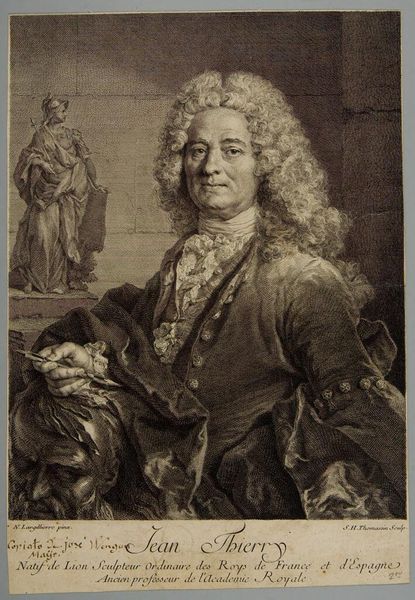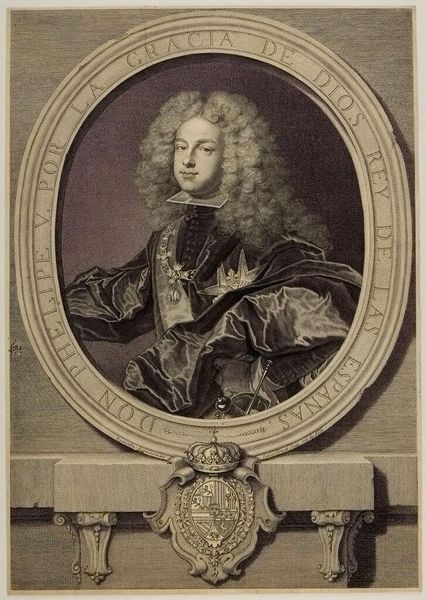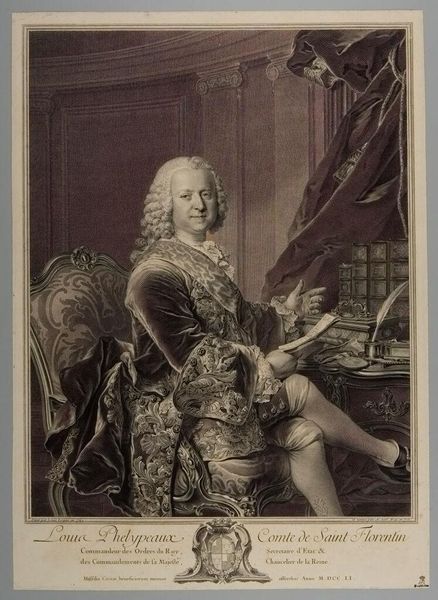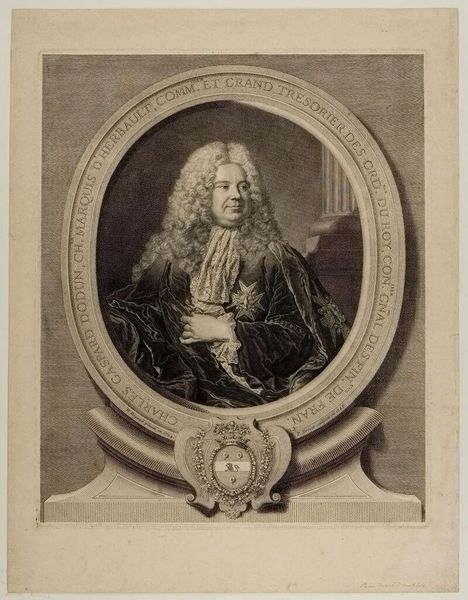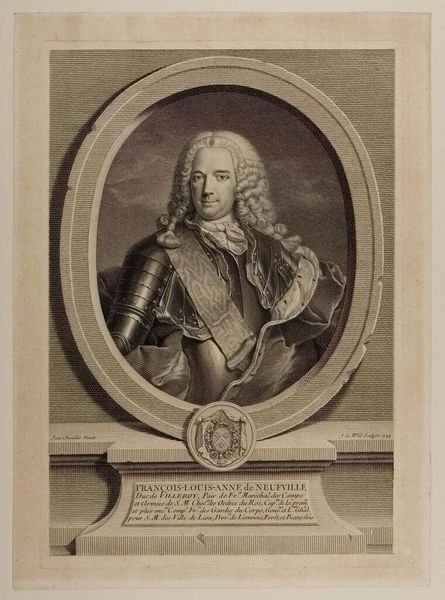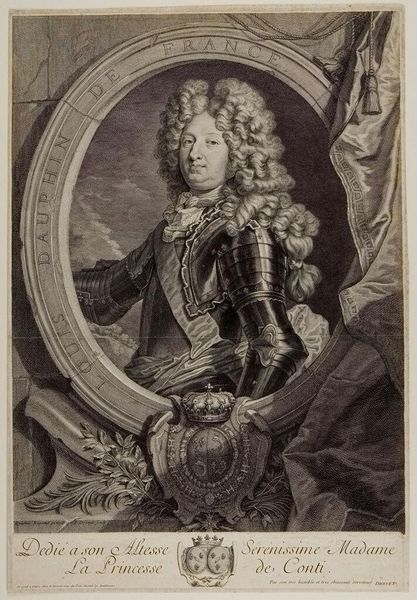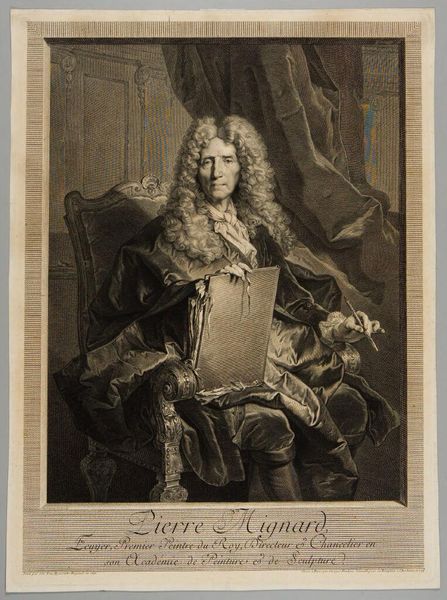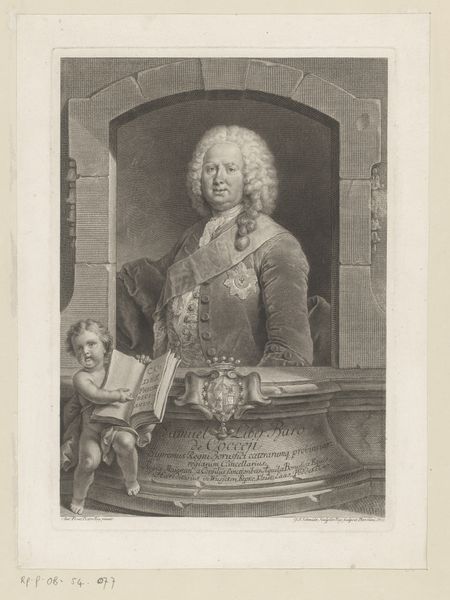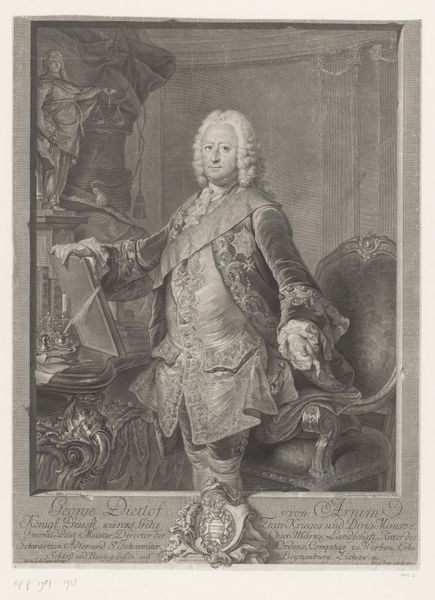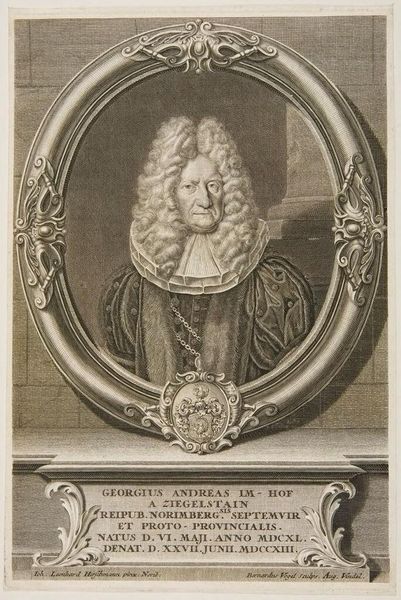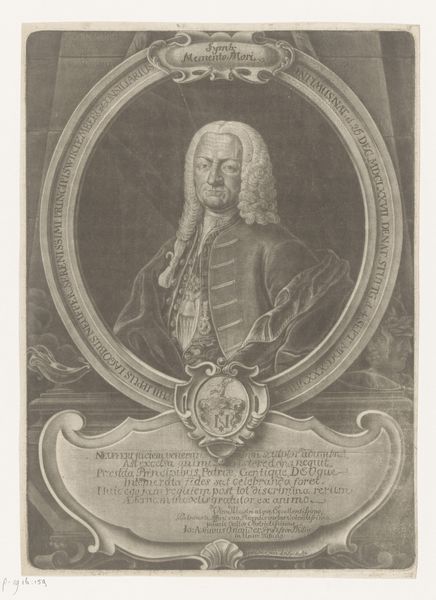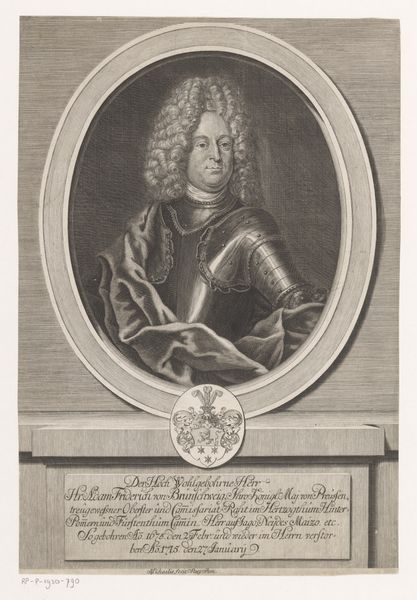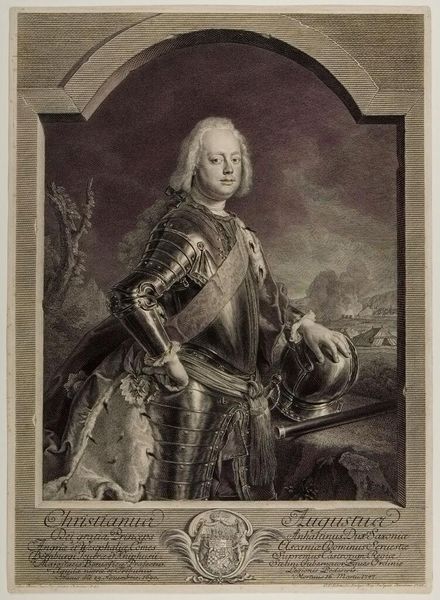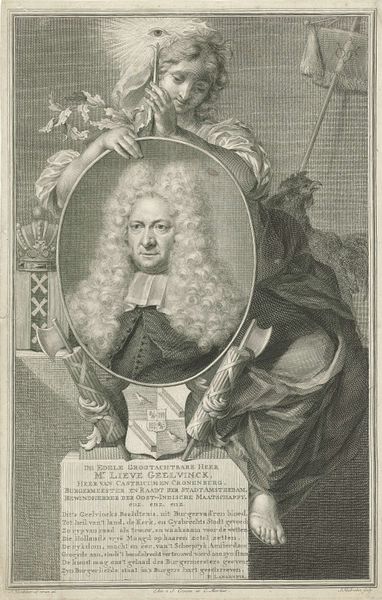
Copyright: CC0 1.0
Editor: So, this is Georg Friedrich Schmidt's portrait of Samuel Liber Baro de Cocceji, housed at the Harvard Art Museums. It feels very formal and posed, almost like a monument. What can you tell me about the public role of portraits like this? Curator: Portraits like this, particularly in the 18th century, were powerful tools for constructing and reinforcing social hierarchies. Schmidt’s depiction isn’t just an image, it's a carefully crafted statement about Cocceji’s status, power, and intellect. Note the details: the architectural setting, the cherub, the text. How do these elements contribute to the overall message? Editor: It looks like he is trying to convey authority and wisdom. I hadn't thought about how staged and artificial it must all be. I see it differently now. Curator: Exactly. The portrait becomes a political act, shaping how Cocceji was perceived and remembered by the public. Reflect on how imagery then and now constructs and reinforces perceptions of power.
Comments
No comments
Be the first to comment and join the conversation on the ultimate creative platform.
